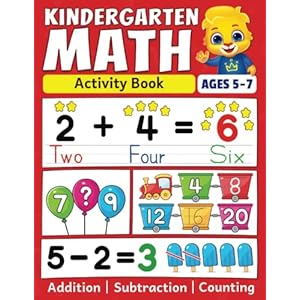
For folks managing meals allergic reactions, day by day can really feel like navigating a minefield. The persistent worry of an unintentional publicity goes far past inconvenience — it’s a supply of ongoing stress. The problem isn’t simply studying labels appropriately; it’s birthday events, sleepovers, on a regular basis moments that appear easy however require an additional layer of care and consideration. A current survey carried out by The Harris Ballot, Genentech, and Novartis Prescribed drugs discovered that 93% of fogeys/caregivers¹ report experiencing emotions of worry and fear over their baby’s meals allergy. The survey, which aimed to raised perceive the experiences of 500 U.S. mother and father/authorized guardians of youngsters with meals allergic reactions, additionally revealed that 74% have restricted actions because of the threat of exposure¹.
Regardless of affected person and caregiver’s finest efforts, unintentional exposures nonetheless occur. In response to the research, caregivers reported that 78% of their youngsters had an surprising encounter with an allergen previously 12 months, and greater than half of these instances required a visit to the emergency room¹. These numbers spotlight the vital want for understanding and managing meals allergic reactions.
Rising Prevalence of Meals Allergy symptoms
Over the past twenty years, the prevalence of meals allergic reactions has steadily climbed, impacting thousands and thousands of youngsters and adults throughout the nation. Roughly 4.6% of youngsters within the U.S. — or about 3.4 million — have been identified by a doctor with a meals allergy. Amongst these youngsters, practically 38% are allergic to a couple of food².
Understanding Meals Allergy symptoms within the Physique
Meals allergy is a situation wherein consuming sure meals results in an irregular immune response. Meals allergic reactions are both immunoglobulin E (IgE)-mediated or non–IgE-mediated reactions. Immunoglobulin E is a sort of antibody which may shortly set off your physique to launch chemical compounds corresponding to histamine³. When somebody with IgE antibodies eats a sure meals they’re allergic to, the IgE antibodies set off the physique to launch these chemical compounds which then trigger the signs of a meals allergy reaction⁴. Principally, the physique’s immune system sees a sure meals as dangerous and reacts by warning us with signs.
In contrast to meals intolerance, meals allergic reactions may be related to anaphylaxis, which is a severe response that features problem respiration and may be probably life-threatening — requiring quick medical attention³. Realizing the distinction between meals allergic reactions and intolerances is essential, particularly when signs can escalate shortly.
Right here’s the way it works: when an individual with IgE antibodies is uncovered to their particular allergen (say, tree nuts or dairy), the allergen binds to these antibodies. This triggers immune cells to launch chemical compounds like histamine, which ends up in signs like hives, swelling, and even extreme respiration points. In extreme instances, simply touching or inhaling the allergen can set off a reaction⁴!
Know The Indicators Of Meals Allergy symptoms
When you’ve got a child, it’s essential to know that meals allergic reactions sometimes develop throughout the first two years of life, however may also current themselves at any time, at the same time as an grownup. That’s why it’s further essential to pay attention to the signs⁵ of meals allergic reactions and search quick medical consideration in the event that they happen.
- Vomiting and/or abdomen cramps
- Hives
- Shortness of breath
- Wheezing
- Repetitive cough
- Tight, hoarse throat; bother swallowing
- Swelling of the tongue, affecting the flexibility to speak or breathe
- Weak pulse
- Pale or blue coloring of pores and skin
- Dizziness or feeling faint
- Shock or circulatory collapse
- Anaphylaxis, a extreme, life-threatening allergic response
The Most Frequent Meals Allergens (Extra Than Simply Nuts!)
Whereas peanuts and tree nuts get lots of consideration, they’re not the one culprits. In response to the U.S. Meals and Drug Administration (FDA)⁶, the 9 commonest meals allergens that trigger 90% of all reactions in children are milk, shellfish, eggs, fish, wheat, soy, sesame, tree nuts, and peanuts. Retaining these in thoughts will help households stop publicity and keep protected.
What To Do if You Suspect a Meals Allergy in Your Youngster
If you happen to suppose your baby might have a meals allergy, it’s essential to hunt knowledgeable prognosis. An allergist makes a speciality of pinpointing and managing allergic reactions, providing exams like blood work, pores and skin pricks, or oral meals challenges. With the appropriate prognosis and steering, mother and father can craft a plan that features dietary changes, emergency protocols, and confidence in navigating on a regular basis life.
Managing meals allergic reactions may be overwhelming, however with consciousness and preparation, mother and father can really feel extra empowered in navigating their baby’s meals allergic reactions. If you happen to suspect your baby or cherished one has an undiagnosed meals allergy, think about scheduling an appointment with an allergist to find out about testing, prognosis, and potential remedy choices that will assist create a safer surroundings for your loved ones.
M-US-00025952 (v1.0) 1/25
This text was initially revealed on
Trending Merchandise











